Abdullah
- Get link
- X
- Other Apps
Neville Goddard Books
The World's Greatest Mystic
Neville Goddard’s Teacher Abdullah
The Master Revealed?
Was there a real esoteric teacher named Abdullah who taught Neville and Joseph Murphy? A plausible candidate exists. He is found in the figure of a 1920s and 30s-era black-nationalist mystic named Arnold Josiah Ford. Like Neville, Ford was born in Barbados, in 1877, the son of an itinerant preacher. Ford arrived in Harlem around 1910 and established himself as a leading voice in the Ethiopianism movement, a precursor to Jamaican Rastafarianism.
Both movements held that the East African nation of Ethiopia was home to a lost Israelite tribe that had preserved the teachings of a mystical African belief system. Ford considered himself an original Israelite, and a man of authentic Judaic descent. Like Abdullah, Ford was considered an “Ethiopian rabbi.” Surviving photographs show Ford as a dignified, somewhat severe-looking man with a set jaw and penetrating gaze, wearing a turban, just like Neville’s Abdullah. Ford himself cultivated an air of mystery, attracting “much apocryphal and often contradictory speculation,” noted Randall K. Burkett, a historian of black-nationalist movements.
Ford lived in New York City at the same time that Neville began his discipleship with Abdullah. Neville recalled his and Abdullah’s first meeting in 1931; and U.S. Census records show Ford was living in Harlem on West 131st Street in 1930. (He was also at the same address in 1920, shortly before Joseph Murphy arrived.) Historian Howard Brotz, in a study of the Black Jewish movement in Harlem, wrote of Ford: “It is certain that he studied Hebrew with some immigrant teacher and was a key link” in communicating “approximations of Talmudic Judaism” from within the Ethiopianism movement. This would fit Neville’s depiction of Abdullah tutoring him in Hebrew and Kabbalah. (It should be noted that early twentieth-century occultists often loosely used the term Kabbalah to denote any kind of Judaic study.)
More still, Ford’s philosophy of Ethiopianism possessed a mental metaphysics. “The philosophy,” noted historian Jill Watts, “…contained an element of mind-power, for many adherents of Ethiopianism subscribed to mental healing and believed that material circumstances could be altered through God’s power. Such notions closely paralleled tenets of New Thought…” Ford was also an early supporter of black-nationalist pioneer Marcus Garvey and served as the musical director of Garvey’s Universal Negro Improvement Association. Garvey had also suffused his movement with New Thought metaphysics and phraseology.
The commonalities between Ford and Abdullah are striking: the black rabbi, the turban, the study of Hebrew, mind-power metaphysics, the Barbados connection, and the time frame. All suggest Ford as a viable candidate for the elusive Abdullah.
Yet there are too many gaps in both Neville’s and Ford’s backgrounds to allow for a conclusive leap. Records of Ford’s life grow thinner after 1931, the year he departed New York and migrated to Ethiopia. Ethiopian Emperor Haile Selassie, after his coronation in 1930, offered land grants to any African-American willing to relocate to the East African nation. Ford accepted the offer. The timing of Ford’s departure is the biggest single blow to the Abdullah-Ford theory. Neville said that he and his teacher had studied together for five years. This obviously would not have been possible with Ford, who had apparently left New York in 1931, the same year Neville said that he and Abdullah first met.
In a coda to Ford’s career, he journeyed to Africa, along with several other American followers of Ethiopianism, to accept the land grants offered by Haile Selassie. Yet Ford’s life in the Ethiopian countryside, a period so sadly sparse of records, could only have been a difficult existence for the urbane musician. Here was a man uprooted from metropolitan surroundings at an advanced age to settle into a new and unfamiliar agricultural landscape. All the while, Ethiopia was facing the threat of invasion by fascist Italy. Ford died in Ethiopia in September 1935, a few weeks before Mussolini’s troops crossed the border.
While Ford’s migration runs counter to Neville’s timeline, there are other ways in which Ford may fit into the Abdullah mythos. Neville could have extrapolated Abdullah from Ford’s character after spending a briefer time with Ford. Or Abdullah may have been a metaphorical composite of several contemporaneous figures, perhaps including Ford.* Or, finally, Abdullah may have been Neville’s invention, though this scenario doesn’t account for Joseph Murphy’s record.
The full story may never be knowable, but the notion of two young metaphysical seekers, Neville and Murphy, living in pre-war New York and studying under an African-American esoteric teacher, whether Ford or another, is wholly plausible. The crisscrossing currents of the mind-power movement in the first half of the twentieth century produced collaborations among a wide range of spiritual travelers, who traversed the metaphysical landscape with a passion for personal development and self-reinvention.
Mitch Horowitz
- Neville Goddard Books
- Neville Goddard’s 10 Books
- Neville Goddard Text Lectures
- Neville Goddard Memes
- Audio Files (Metaphysical)
- Metaphysics 101 (Under Construction)
- Law of Attraction Videos
- Esoteric Teachings
- Law of Attraction Books
- Law of Attraction Books 2
- Law of Attraction Books 3
- Metaphysical Teachings
- New Thought Teachings
- Secret Teachings
- Secret Teachings 2
- Selected Metaphysical Treasures
- Miscellaneous Books
- Free eBooks (Over 3000 PDF’s)
- Kindle Books (Law of Attraction)
- Keys To The Law of Attraction
- Neville Goddard Photo Gallery
- Our Friends
- The Power of I AM
- Author Biographies
- Look Inside David Allen’s Books
- Meditations For a Better Life
- About Us
- Contact Us
Our Books
- See All Our Books On Amazon Here
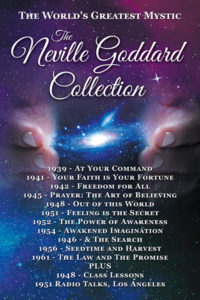 The Neville Goddard Collection
The Neville Goddard Collection Neville Goddard’s Interpretation Of Scripture
Neville Goddard’s Interpretation Of Scripture Neville Goddard -The Wish Fulfilled
Neville Goddard -The Wish Fulfilled Neville Goddard – Consciousness, The Giver Of All Gifts
Neville Goddard – Consciousness, The Giver Of All Gifts Neville Goddard – Your Inner Conversations Are Creating Your reality
Neville Goddard – Your Inner Conversations Are Creating Your reality Neville Goddard – Imagining Creates Reality: 365 Mystical Daily Quotes
Neville Goddard – Imagining Creates Reality: 365 Mystical Daily Quotes Neville Goddard – Imagination, The Creative Power In Man
Neville Goddard – Imagination, The Creative Power In Man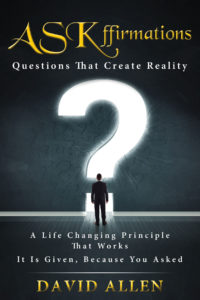 David Allen – ASKffirmations: Questions That Create Reality
David Allen – ASKffirmations: Questions That Create Reality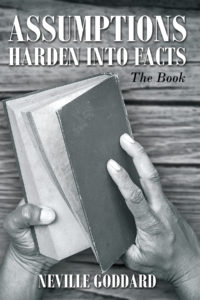 Neville Goddard – Assumptions Harden Into Facts: The Book
Neville Goddard – Assumptions Harden Into Facts: The Book Neville Goddard – The World Is At Your Command: The Very Best Of Neville Goddard
Neville Goddard – The World Is At Your Command: The Very Best Of Neville Goddard The Money Bible: The Spiritual Secrets of Attracting Prosperity and Abundance
The Money Bible: The Spiritual Secrets of Attracting Prosperity and Abundance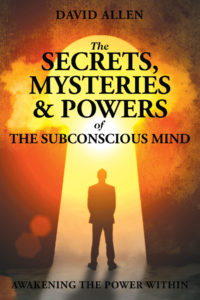 David Allen – The Secrets, Mysteries and Powers of The Subconscious Mind
David Allen – The Secrets, Mysteries and Powers of The Subconscious Mind David Allen – The Creative Power Of Thought
David Allen – The Creative Power Of Thought David Allen – The Power Of I AM
David Allen – The Power Of I AM David Allen – The Power Of I AM: Volume 2
David Allen – The Power Of I AM: Volume 2 David Allen – The Power Of I AM: Volume 3
David Allen – The Power Of I AM: Volume 3 The Creative Power of Mind: Daily Meditations
The Creative Power of Mind: Daily Meditations The Within Creates The Without: Daily Meditations
The Within Creates The Without: Daily Meditations Christian Larson Volume 1 of 6
Christian Larson Volume 1 of 6 Christian Larson Volume 2 of 6
Christian Larson Volume 2 of 6 Christian Larson Volume 3 of 6
Christian Larson Volume 3 of 6 Christian Larson Volume 4 of 6
Christian Larson Volume 4 of 6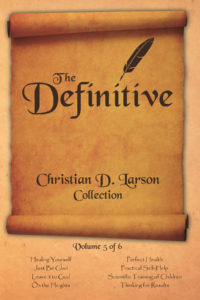 Christian Larson Volume 5 of 6
Christian Larson Volume 5 of 6 Christian Larson Volume 6 of 6
Christian Larson Volume 6 of 6
Directory
- Neville Goddard Books
- Neville Goddard’s 10 Books
- Neville Goddard Text Lectures
- Neville Goddard Memes
- Audio Files (Metaphysical)
- Metaphysics 101 (Under Construction)
- Law of Attraction Videos
- Esoteric Teachings
- Law of Attraction Books
- Law of Attraction Books 2
- Law of Attraction Books 3
- Metaphysical Teachings
- New Thought Teachings
- Secret Teachings
- Secret Teachings 2
- Selected Metaphysical Treasures
- Miscellaneous Books
- Free eBooks (Over 3000 PDF’s)
- Kindle Books (Law of Attraction)
- Keys To The Law of Attraction
- Neville Goddard Photo Gallery
- Our Friends
- The Power of I AM
- Author Biographies
- Look Inside David Allen’s Books
- Meditations For a Better Life
- About Us
- Contact Us
Neville’s 10 Books
- Home
- Neville Goddard Chapter by Chapter
- At Your Command
- Awakened Imagination & The Search
- Feeling Is The Secret
- Freedom For All
- Out of This World
- Prayer The Art of Believing
- Seedtime and Harvest
- The Law and The Promise
- The Power of Awareness
- Your Faith Is Your Fortune
- Neville Goddard Text Lectures
- Free eBooks (Over 3000 PDF’s)
- Home
- Neville’s 10 Books
- A Divine Event
- A Lesson in Scripture
- A Movement of Mind
- A Movement Within God
- A Parabolic Revelation
- A Prophecy
- A Riddle
- A State Called Moses
- Affirm The Reality Of Your Own Greatness
- All Powerful Human Words
- All That Is Divine
- All That You Behold
- All Things Are Possible 1967
- All Things Are Possible 1969
- All Things Exist
- An Assured Understanding
- An Inner Conviction
- Answered Prayer
- Arise
- Awake O Sleeper . . 07-25-1968
- Awake, O Sleeper 01-08-1968
- Awakened Imagination 1954
- Barabbas or Jesus
- Be Imitators of God
- Be What You Wish To Be, Be What You Believe
- Bear Ye One Another’s Burdens
- Before Abraham, Was I AM
- Behold The Dreamer Cometh
- Believe in Him
- Believe It In
- Biblical Language
- Blake On Religion
- Brazen Impudence
- Building Your Temple
- By Imagination We Become
- By Water And Blood
- Catch The Mood
- Changing The Feeling Of I
- Christ Bears Our Sins
- Christ In Man
- Christ In You
- Christ Is Your Life
- Christ Unveiled
- Christmas – Man’s Birth As God
- Come, O Blessed
- Conception
- Consigned To Disobedience
- Control Your Inner Conversations
- Creation, Faith
- Divine Signs
- Election And Change Of Consciousness
- Enter The Dream
- Esau And Jacob
- Esau, Jacob, Israel
- Eschatology – The Doctrine Of The End . . 01-20-1969
- Eschatology The Drama Of The End . . 04 – 05 – 1968
- Eternal States
- Eternity Within
- Every Natural Effect
- Examine Yourselves
- Experience Scripture
- Faith
- Faith In God
- Faith, Hope And Love
- Family Portrait
- Fawcett’s Letter
- Feed My Sheep
- Feel Deeply
- Feeling Is The Secret
- Follow Me
- Follow The Pattern
- Four Mighty Ones
- Fourfold Vision
- Freedom
- Fulfillment of God’s Plan
- Fundamentals
- Genesis 27 Jacob Gets Isaac’s Blessing
- Gifts Bestowed By God
- God Became Man
- God Given Talent
- God Is Light
- God Only Acts
- God Speaks To Man
- God’s Almighty Power
- God’s Creative Power
- Gods Dwelling Place
- Gods Plan Of Redemption 03-24-1969
- Gods Promise To Man
- Gods Wisest Creature
- Gods Word
- Good Friday Easter
- Grace vs Law
- Have You Found Him
- He Dreams In Me
- He Is Dreaming Now 05-8-1970
- He Is Dreaming Now, Date Unknown
- He Is My Resurrection
- He Wakes In Me
- His Name
- His Purpose
- His To Give, Yours To Receive
- House On The Strip
- I AM In You
- I AM The Cause
- I AM The Lord
- I Remember When
- If Any Two Agree
- If You Really Can Believe
- Imagination
- Imagination Creates Reality
- Imagination Fulfills Itself
- Imagination My Slave
- Imagination Plus Faith
- Imagining Creates
- Infinite Power
- Infinite States
- Is Christ Your Imagination
- Jeremiah’s Discovery
- Jesus Christ
- Judas The Revealer
- Live In The End
- Live The Answer Now
- Love Endureth
- Many Mansions
- Meditation
- Moses – Elijah – Jesus
- My Word
- Neville’s Purpose Revealed
- No Other Foundation 10-10-1969
- No Other Foundation 11-04-1968
- No Other God
- No Other Gods
- North Of The Strip
- Occupant or Inmate
- One Thousand Two Hundred Sixty Days
- Order – Then Wait
- Paul’s Autobiography
- Paul’s Prayer Interpreted
- Perception
- Persistent Assumption 03-18-1968
- Persistent Assumption 06-18-1968
- Power
- Power And Wisdom
- Power Called The Law
- Pre-Existence
- Predestined Glory
- Prophetic Blueprints
- Prophetic Sketches 07-18-1968
- Prophetic Sketches 09-22-1967
- Reconciliation
- Redemption
- Release Barabbas And Crucify Jesus
- Revealed Truth
- Revelation Of Purpose
- Salvation History
- Salvation History – Not Secular
- Secret of Imagination
- Seedtime And Harvest
- Seeing Christ Through The Eyes Of Paul
- Seek The Kingdom
- Self Abandonment
- Self In Self And Risen
- Sharing In Creativity
- Signs From Above
- Sons Of The Most High
- Sound Investments
- Spiritual Sensation
- Step Into The Picture, Who God Really Is
- Stone, Water or Wine
- Summary
- Test Him And See
- Test Yourselves
- That Which Already Has Been
- The Art Of Dying
- The Artist Is God
- The Awakening Of Faith
- The Battle Of Armageddon
- The Bible – Your Biography
- The Bible’s Mystery
- The Birth Of The Babe
- The Book Of Job
- The Bread And The Wine
- The Coin Of Heaven
- The Core Of Man
- The Law of Assumption
- The Creator
- The Crucifixion
- The Cup Of Experience
- The Divine Body
- The Dweller On The Threshold
- The Father
- The First Principle
- The Flood Is Still Upon Us
- The Forming Of Christ In You
- The Foundation Stone – Imagination
- The Four Mighty Ones
- The Fourfold Gospel
- The Free Man
- The Game Of Life
- The Gospel
- The Great Mystery
- The Great Possession
- The Great Secret
- The Heart Of The Dreamer
- The Heavenly Vision
- The Hidden Cause
- The Hidden Secret Of God
- The Identical Harvest
- The Incarnate Revelation
- The Knowledge Of God
- The Last Days
- The Law
- The Light Of The World
- The Living Word
- The Lord Our Potter
- The Man Within
- The Miraculous Child
- The Morning Star
- The Most Precious Gift
- The Mystery Called Christ
- The Mystery Of Baptism
- The Mystery Of Inspiration
- The Mystery Of Life
- The Nature Of God
- The New Christology
- The Only Christianity
- The Pattern Man . . Date Unknown
- The Pattern Man 07-17-1968
- The Perfect Image
- The Perfect Law Of Liberty
- The Potter’s House
- The Power And The Wisdom
- The Power Of Awareness
- The Primal Wish
- The Promise Explained
- The Promise Fulfilled
- The Pruning Shears Of Revision
- The Pure In Heart
- The Revealer
- The Rock
- The Roll Of The Book
- The Second Vision
- The Secret Of Causation
- The Secret Of Imagining
- The Secret Of Prayer
- The Seven Eyes Of God
- The Shaping Of The Begotten
- The Signs Of The End . . 07-26-1968
- The Signs Of The End . . 10-20-1967
- The Sin Against The Holy Ghost
- The Son Revealed
- The Source
- The Sphere Within
- The Spirit Of Truth
- The Spirit Within
- The Spiritual Cause
- The State Of Vision
- The Story Of Judas
- The Talent
- The Tree Of Life
- The True Knowledge Of God
- The True Vine
- The Truth Of Christ Is Here
- The Twelve Disciples
- The Ultimate Sense
- The Value Of Dreams
- There Is No Fiction
- They Related Their Own Experience
- Three Propositions
- True Forgiveness
- Trust In God
- Truth
- Truth, The Word Of God
- Walk By Faith
- Walk On The Water
- What Are You Doing
- What Is Truth . . 03-31-1968
- What Is Truth . . 07-14-1970
- Where Are You From
- Where Are You Staying
- Where Is Golgotha . . 04-9-1971 (Good Friday)
- Who AM I? . . 05-06-1968
- Who AM I? . . 07-15-1968
- Who Is The Real Messiah
- Who Is The Son Of Man
- Who Paul Really Is
- Whom Do You Seek
- Whom Has God Afflicted
- Wonder Working Power
- Worship The Creator, Not The Creature
- You Are A Cosmic Being
- You Can Forgive Sin
- You Can Never Outgrow I AM
- You Dare To Assume
- You Must Experience God
- Your Husband
- Your Maker
- Your Supreme Dominion
- Yours For The Taking
- Get link
- X
- Other Apps

Comments
Post a Comment